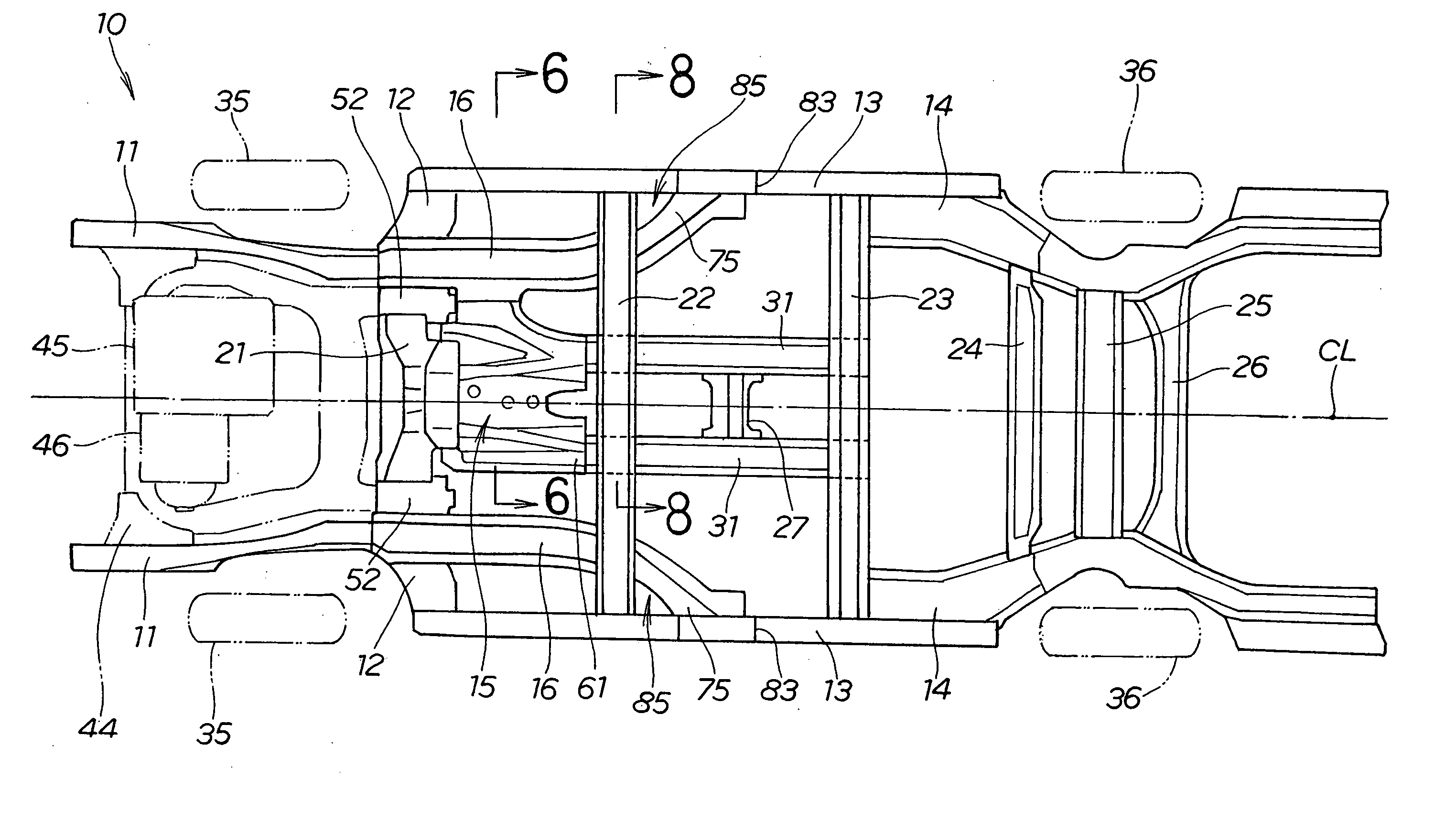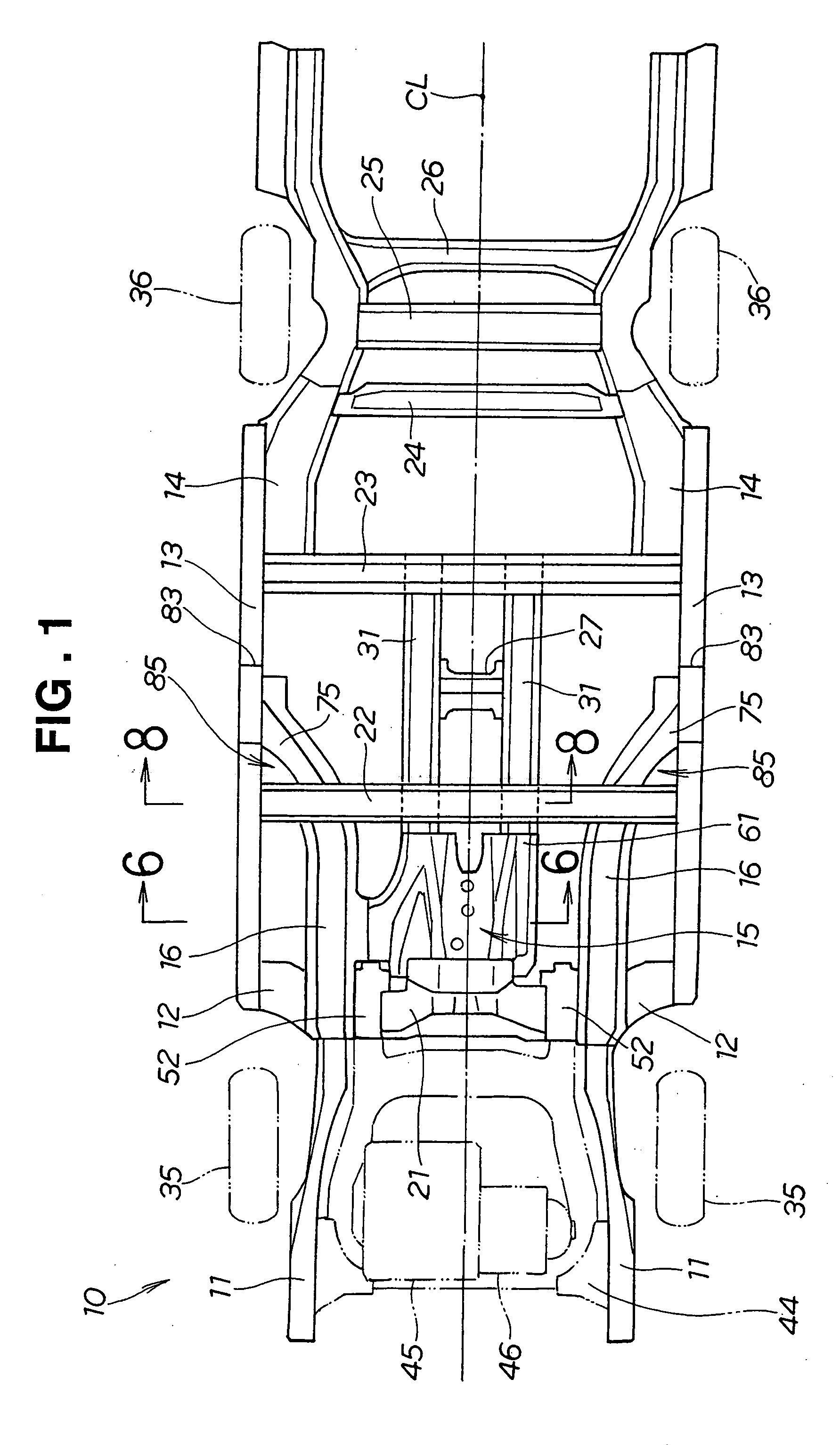Vehicle front body structure
- Summary
- Abstract
- Description
- Claims
- Application Information
AI Technical Summary
Benefits of technology
Problems solved by technology
Method used
Image
Examples
Embodiment Construction
[0035]FIG. 1 shows a vehicle body 10 with a floor panel removed, but a floor tunnel 15 is shown for convenience of description. Throughout the drawings the terms “front,”“rear,”“right” and “left” represent directions as viewed from a driver.
[0036] Referring to FIG. 1, the vehicle body 10 is a low-floor type vehicle body with a floor panel reduced in height. The vehicle body 10 is comprised of a vehicle frame mainly including front side members 11, 11, right and left side outriggers 12, 12, right and left side sills 13, 13, right and left rear side members 14, 14, a floor tunnel 15, floor frame members 16, 16, and crossmembers 21 to 26.
[0037] The right and left front side members 11, 11 are disposed at the front of the vehicle body 10, extending longitudinally of the vehicle body 10.
[0038] The right and left side outriggers 12, 12 are joined to rear side portions of the right and left front side members 11, 11.
[0039] The right and left side sills 13, 13 extend rearward from rear ...
PUM
 Login to View More
Login to View More Abstract
Description
Claims
Application Information
 Login to View More
Login to View More - R&D
- Intellectual Property
- Life Sciences
- Materials
- Tech Scout
- Unparalleled Data Quality
- Higher Quality Content
- 60% Fewer Hallucinations
Browse by: Latest US Patents, China's latest patents, Technical Efficacy Thesaurus, Application Domain, Technology Topic, Popular Technical Reports.
© 2025 PatSnap. All rights reserved.Legal|Privacy policy|Modern Slavery Act Transparency Statement|Sitemap|About US| Contact US: help@patsnap.com



